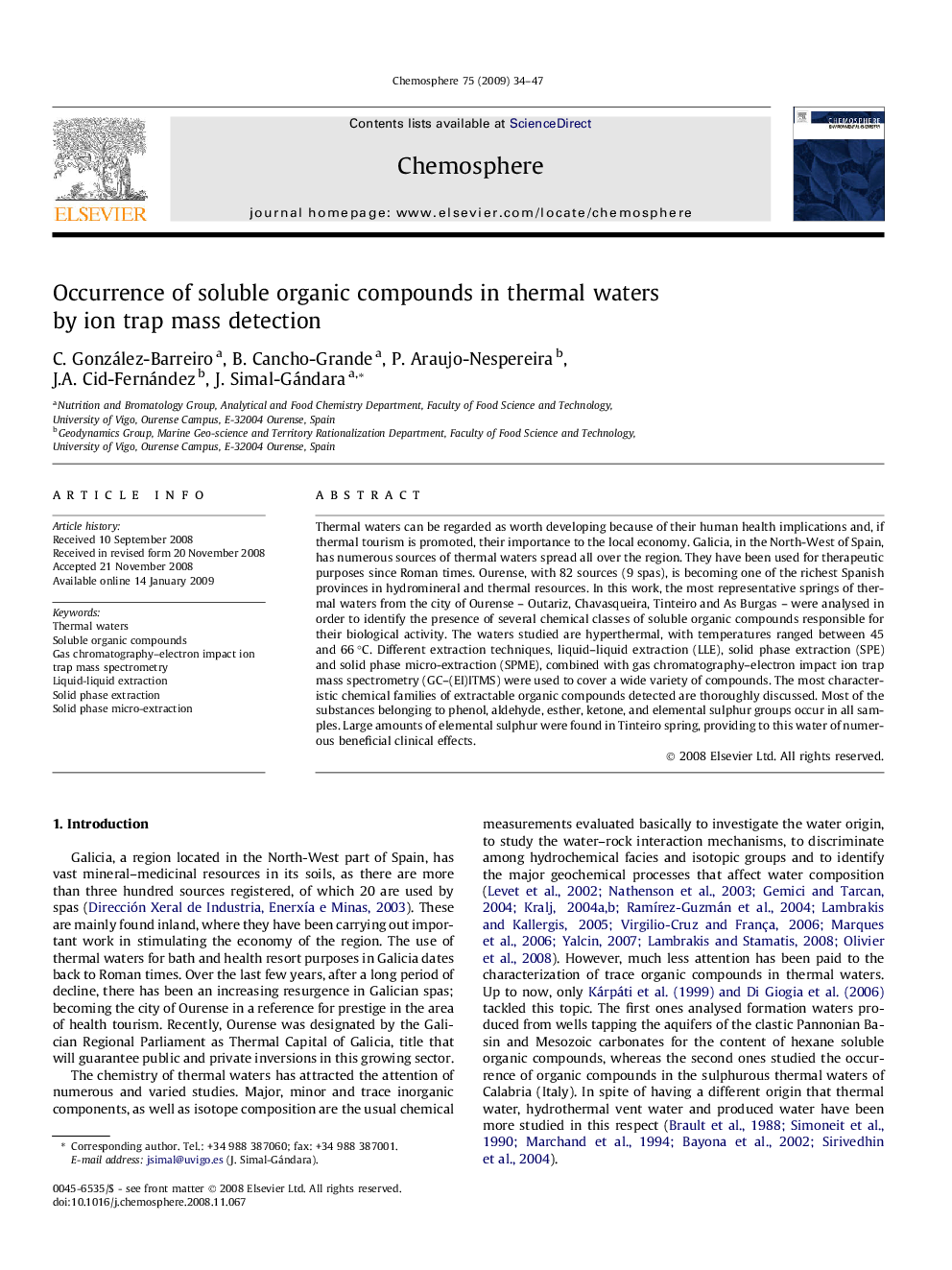| Article ID | Journal | Published Year | Pages | File Type |
|---|---|---|---|---|
| 4413481 | Chemosphere | 2009 | 14 Pages |
Thermal waters can be regarded as worth developing because of their human health implications and, if thermal tourism is promoted, their importance to the local economy. Galicia, in the North-West of Spain, has numerous sources of thermal waters spread all over the region. They have been used for therapeutic purposes since Roman times. Ourense, with 82 sources (9 spas), is becoming one of the richest Spanish provinces in hydromineral and thermal resources. In this work, the most representative springs of thermal waters from the city of Ourense – Outariz, Chavasqueira, Tinteiro and As Burgas – were analysed in order to identify the presence of several chemical classes of soluble organic compounds responsible for their biological activity. The waters studied are hyperthermal, with temperatures ranged between 45 and 66 °C. Different extraction techniques, liquid–liquid extraction (LLE), solid phase extraction (SPE) and solid phase micro-extraction (SPME), combined with gas chromatography–electron impact ion trap mass spectrometry (GC–(EI)ITMS) were used to cover a wide variety of compounds. The most characteristic chemical families of extractable organic compounds detected are thoroughly discussed. Most of the substances belonging to phenol, aldehyde, esther, ketone, and elemental sulphur groups occur in all samples. Large amounts of elemental sulphur were found in Tinteiro spring, providing to this water of numerous beneficial clinical effects.
